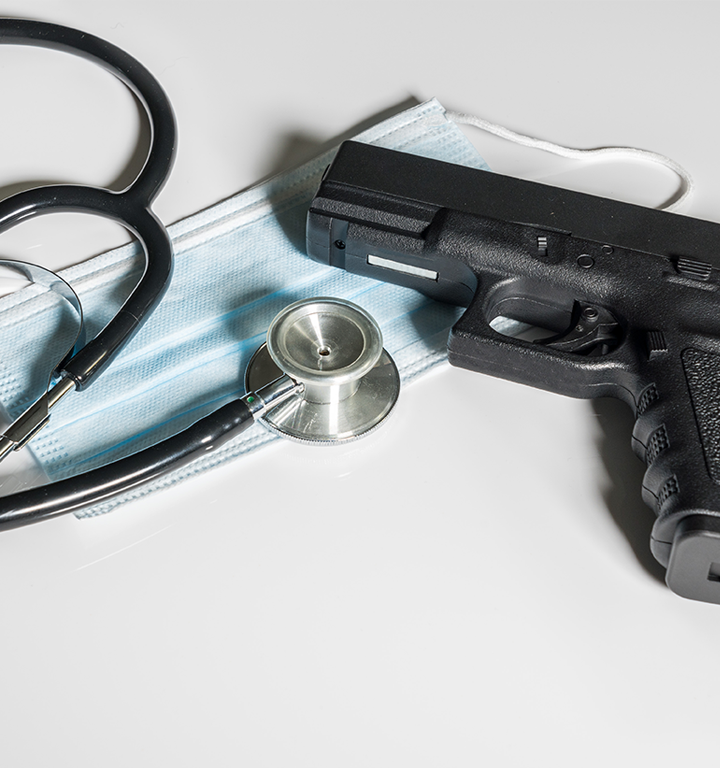
Summary
Preparation is only half the battle ― you must know how to put that preparation into action when the time comes.
Considering the possibility of an active shooter situation is an uncomfortable reality for most public places, including hospitals and medical facilities. In our article Preparing for a Potential Active Shooter, we presented information on how to prepare for the possibility that an active shooter event may take place at your office or facility. Those preparations can help prevent, reduce, or limit a shooter’s access to potential victims, while reducing or preventing injuries and loss of life. Preparation is only half the battle ― you must know how to put that preparation into action when the time comes. This article focuses on your response to an actual active shooter event.
The U.S. Department of Homeland Security defines an active shooter as "an individual actively engaged in killing or attempting to kill people in a confined and populated area; in most cases, active shooters use firearm(s) and there is no pattern or method to their selection of victims." An active shooting event will be unpredictable, evolve quickly, and involve the intervention of law enforcement.
How to Respond to an Active Shooter
The U.S. Department of Homeland Security has developed a brochure entitled Active Shooter: How to Respond. The recommendations below are based on these guidelines and may be adapted to meet the specific needs of your healthcare organization and its individual facilities. You should also consult with an expert or legal counsel for advice. The priority is to determine the most reasonable way to protect the lives of staff members and patients. Visitors and patients will likely follow your employees’ lead during an active shooter situation, so it is important that your staff members are trained in the procedures that apply to your facility, such as:
Evacuate if there is an accessible escape path.
The U.S. Department of Homeland Security defines an active shooter as "an individual actively engaged in killing or attempting to kill people in a confined and populated area; in most cases, active shooters use firearm(s) and there is no pattern or method to their selection of victims." An active shooting event will be unpredictable, evolve quickly, and involve the intervention of law enforcement.
How to Respond to an Active Shooter
The U.S. Department of Homeland Security has developed a brochure entitled Active Shooter: How to Respond. The recommendations below are based on these guidelines and may be adapted to meet the specific needs of your healthcare organization and its individual facilities. You should also consult with an expert or legal counsel for advice. The priority is to determine the most reasonable way to protect the lives of staff members and patients. Visitors and patients will likely follow your employees’ lead during an active shooter situation, so it is important that your staff members are trained in the procedures that apply to your facility, such as:
Evacuate if there is an accessible escape path.
- Always be aware of your surroundings and have an escape route and plan in mind.
- Leave all belongings behind.
- Keep your hands visible (so law enforcement officers who arrive on the scene can easily tell that you are unarmed).
- Call 911 and stop others from entering the building.
- Location of the shooter(s), including the address, building, floor, unit, etc.
- Number of shooters
- Physical description of shooter(s)
- Number and type of weapon(s) held by the shooter(s)
- Number of potential victims at the location
- If you are in an office or patient room, stay there and secure the door. If the door is not equipped with a lock, use whatever is readily available (exam table, chairs, etc.) to secure and/or block the door.
- Close blinds, block windows, and turn off the lights.
- Turn off radios and computer monitors.
- Silence all cell phones and pagers.
- If possible, place signs in exterior windows to identify your location and the location of any injured persons.
- Keep everyone calm and quiet.
- Once the area is secure, hide behind items that might provide additional protection (like walls, desks, book shelves, exam tables, or filing cabinets).
- If you find yourself in an open area or confronted by the shooter, attempt to put something between you and the assailant.
- Act with physical aggression and attempt to incapacitate the assailant any way you can.
- Remain calm and follow the instructions of law enforcement officers.
- Immediately raise your hands and spread your fingers — keep your hands visible at all times.
- Avoid making quick movements toward officers, such as attempting to hold on to them for safety.
- Avoid pointing, screaming, or yelling.
- Do not stop to ask officers for help or directions when evacuating. Proceed in the direction from which officers are coming and away from any sounds of violence.
Copyrighted. No legal or medical advice intended. This post includes general risk management guidelines. Such materials are for informational purposes only and may not reflect the most current legal or medical developments. These informational materials are not intended, and must not be taken, as legal or medical advice on any particular set of facts or circumstances.